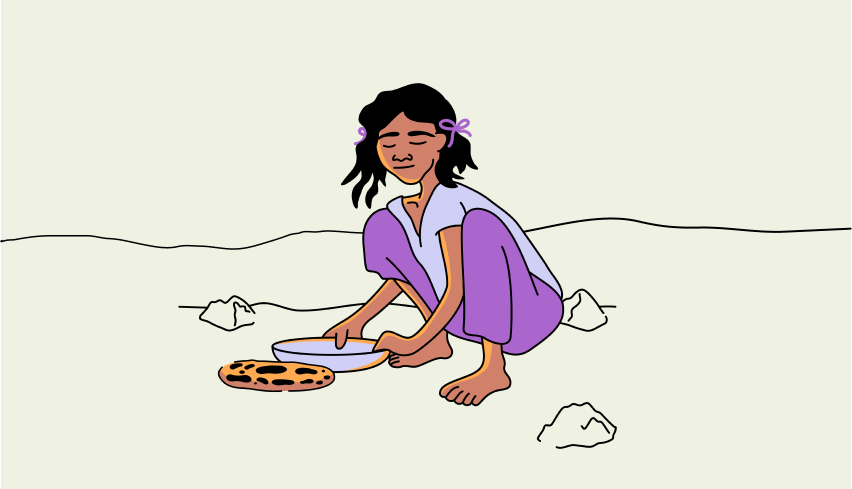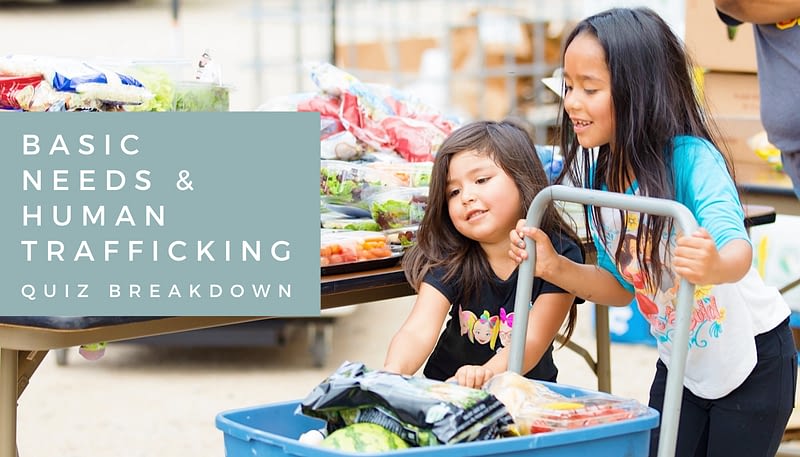By: SOS International
As our summer feeding program kicks off, we are reminded of the impact of basic needs in securing communities from traffickers. Food and water are basic needs that go unmet far too often, and it impacts the safety of at-risk children. Do you know the impact basic needs have on trafficking?
**Spoiler alert: If you haven’t taken the quiz yet, the answers are below.**
1. Globally, how many people lack access to clean water?
A. 1.2 Billion
B. 880 Million
C. 2.2 Billion
D. 500 Million
Can you believe that 2.2 Billion lack access to clean water? That’s 1 in 3 people worldwide. That’s 6 times the US population that lacks water. Lack of access to clean water is a huge problem for communities, as it creates vulnerability to traffickers.
2. Globally, how many people are food insecure?
A. 1 Billion
B. 820 Million
C. 437 Million
D. 3 Billion
Hunger looks different all over the world. Malnutrition can be deceiving, as a seemingly healthy child can be severely malnourished. The combination of food scarcity and improper nutrition are the leading contributors to child mortality.
3. How many Americans face food insecurity?
A. 34 Million
B. 9 Million
C. 331 Million
D. 4 Million
1 in 10 households face some form of food insecurity in the United States.
4. Which of the following is an example of how lacking basic needs is exploited by traffickers?
A. Traffickers take advantage of children who are isolated by having to stay home with smaller siblings while parents work late.
B. Traffickers preying on vulnerable communities, seeking to take advantage of little girls while they trek for water.
C. Traffickers leverage food insecurity by promising food or money in exchange for sexual or labor services.
D. All of the above.
The trek for water can be dangerous for small children, as traffickers wait along common routes to take children in isolated areas. Traffickers will also take advantage of children who they know are isolated from parents who have to work late and have no choice but to leave them home alone or to leave young children with their even younger siblings. This kind of isolation makes it easier for traffickers to lure children. Traffickers will also leverage food insecurity by promising food or money in exchange for sexual or labor services. People do not choose this; they are coerced or tricked into it. Before they realize it, they are stuck in a life of exploitation.
5. Which of the following is true in communities that lack water:
A. Victims are tricked by being lured with job offers but end up trapped in red-light districts.
B. Victims are stolen while traveling for water.
C. Traffickers always contaminate water sources to create need.
D. Victims are sold by desperate neighbors.
Trafficking often happens when traffickers offer job opportunities only to pull a bait and switch, which results in girls and women being trapped in red-light districts. In other instances, victims are sold into slavery by people they know. Factors such as the instability of war, immigration, threats, and lack of basic needs such as food and water create desperation. This desperation leads to families or neighbors selling their children, wives, or friends into slavery.
6. What is the average distance women and children walk to fetch water:
A. 1 Mile
B. 3 Miles
C. Half a mile
These long trips to water sources are often far away from the public eye. Although others may walk along the route, the remote nature, when walked alone, can be an easy place for a trafficker to take children or women. Often the water they walk a 5K for is still unsafe for drinking. It’s also worth considering that part of the trip is hauling water back, which can weigh nearly 40 lbs for the common 5-gallon container.
7. Which of the following is an impact of providing clean water solutions for a community
A. Eliminates long trips for water, keeping children safe from traffickers.
B. Close access to water helps kids stay in school & community, securing them from traffickers.
C. Close and fair access to water prevent traffickers from leveraging it to traffic victims.
D. All of the above.
When fair and close access to water is provided for communities, it eliminates the need for long trips and thus eliminates a huge opportunity for traffickers. It secures the community from traffickers by preventing them from leveraging their lack of water to traffick them. Clean water also leads to more days in school for kids since they don’t have to miss time in school to fetch water. These days in school keep them connected to their community, creating a greater network that prevents childhood isolation that traffickers like to prey on.
Preventing trafficking from happening through providing basic needs has a huge impact. This is why we partner with local communities worldwide to secure communities with basic needs. You are a major part of making this happen! A gift today will help to mobilize food outreaches and drill custom water projects. The work being done can’t happen without you.






